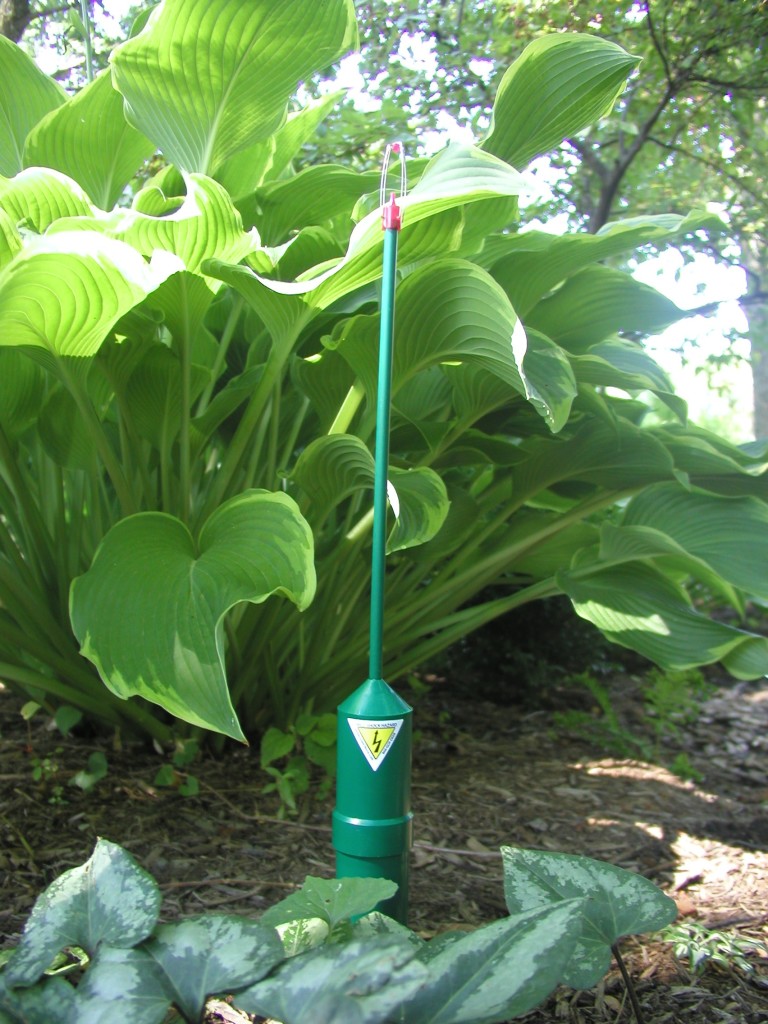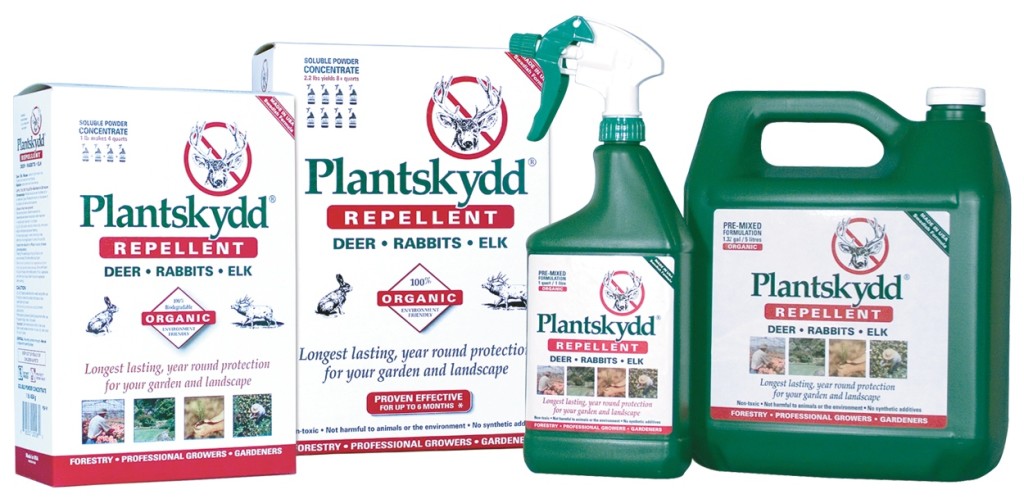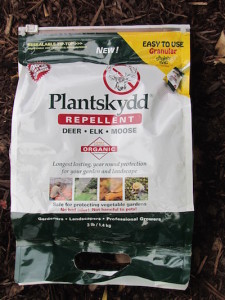
Deer dined on the leaves of Annabelle hydrangea. (C) Jo Ellen Meyers Sharp
If deer like your plants as much or maybe even more than you do, you should be taking the offensive as soon as plants start to grow.
There are two basic ways to keep deer, rabbits and other critters away from our tulips and tomatoes: exclusion and repellents.
Exclusion is a fence, which can be effective, but unsightly. It needs to be about 8 feet high to keep deer out. There are metal and plastic fence materials. With plastic, make sure the grid is small or large enough so that birds don’t get trapped.
Repellents can be a granular or liquid. Animals are repelled by the scent or by the way plants taste. With the taste one, the animal has to take a lick or bite before the repellent works.
Most of the liquid repellents smell gross to humans, and like granular products, may need to be reapplied after a rain, so be sure to read and follow the label directions to ensure the best protection of your plants.

Wireless Deer Fence is made by a veterinarian and engineer in Indiana. Photo courtesy wirelessdeerfence.com
A third option is Indiana-designed and made, Wireless Deer Fence (wirelessdeerfence.com). Each kit contains three, dark green 19-inch posts, each fitted with an attractant. The posts are place strategically in the landscape, the attractants draw in the deer and the batteries provide a shock to its nose, encouraging it to find another route.
“You need to be proactive,” said Julia Hofley, a Michigan garden writer and speaker. I heard her speak about “Taking Back Your Garden” last year at a Michigan event.
You need to start using repellents early in the season. Spray the base of emerging plants, especially tulips, hosta, hydrangeas and daylilies, Hofley said. Plants also need to be treated as they grow. She recommends Plantskydd, which was developed in Sweden to protect plants from moose and elk.

Granted, moose and elk are not a problem in Indiana, but deer, rabbits, squirrels, voles and opossums may be. Plantskydd, which means plant protection, does not work on skunks, raccoons, woodchucks or moles.
 I have been using the granular Plantskydd to control the chipmunks, which had started to burrow under my garage. I’ve seen no chippers around the garage, and fewer of them in my yard in general, which is fine with me.
I have been using the granular Plantskydd to control the chipmunks, which had started to burrow under my garage. I’ve seen no chippers around the garage, and fewer of them in my yard in general, which is fine with me.
Plantskydd carries the Organic Material Review Institute, or OMRI logo, which means it’s approved for use in growing organic food and fiber. It’s also safe for use around pets. The product emits an odor that animals associate with predators, prompting a fear response, causing them to avoid the area.